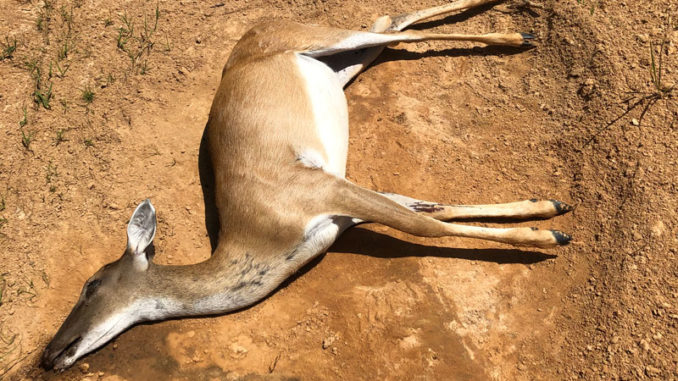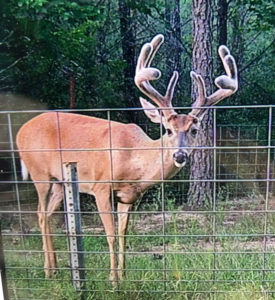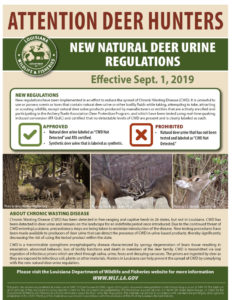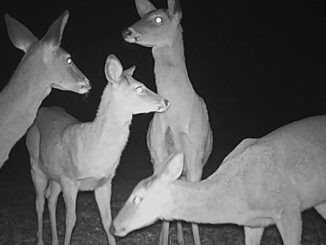
The latest effort to stop the spread of chronic wasting disease (CWD) took place on July 1, 2019, when the Louisiana Wildlife and Fisheries Commission passed a declaration of emergency modifying an existing ban on deer-urine products. The ban is in effect for the 2019-20 hunting season, beginning Sept. 1.
It reads as follows: “It is unlawful to use or possess scents or lures that contain natural deer urine or other bodily fluids while taking, attempting to take, attracting or scouting wildlife, except natural deer-urine products produced by the manufacturers or entities that are actively enrolled and participating in the Archery Trade Association (ATA) Deer Protection Program, which have been tested using real-time quaking induced conversion and certified that no detectable levels of CWD are present and clearly labeled as such.”
Chronic wasting disease
CWD is neurodegenerative, destroying brain tissue in most deer species, including moose, elk, mule deer and white-tailed deer. Infectious and always fatal, it is part of a group of diseases known as transmissible spongiform encephalopathies (TESs) and is similar to mad cow disease. Its irreversible damage to the brain causes salivation, emaciation, neurological symptoms and death. It is caused (and spread) by misfolded proteins called prions shed by infected animals. The prions contaminate soil, are absorbed by plants and spread to other deer when plants are consumed. Prions are durable and last indefinitely, which is why deer urine poses a risk.
Before shopping for approved, ATA-certified deer urine, be advised that as of Aug. 1, none is currently on store shelves, but those in the know expect the deer-urine industry to produce certified products in the near future, possibly as early as a couple of months from now. In the interim, hunters should look for synthetic deer-urine products labeled as such. The new deer-urine regulations are included in the 2019-20 hunting regulations pamphlet. Flyers will be available from license vendors as well.
Existing CWD Regs

This regulation joins others already in effect in Louisiana. The ban on importation of live deer or other cervids has been on the books for years. In 2018, regulations prohibiting the import, transport or possession of any cervid carcass or part of a cervid carcass originating outside of Louisiana were adopted. There are exceptions, allowing Louisiana hunters to import parts from cervids taken in other states. They include cut and wrapped meat, boned-out meat or quarters with no part of the spinal column or head attached, and clean skull plates with antlers. The hunting regulations pamphlet contains a complete listing.
Also in 2018, the LWFC prohibited supplemental deer feeding in East Carroll, Madison and Tensas parishes. This action was also a declaration of emergency in response to the discovery of a buck testing positive for CWD in Mississippi’s Issaquena County, which borders northeast Louisiana.
All commission actions in response to the growing CWD threat are part of LDWF’s CWD Response Plan. It is designed “to monitor and curb the potential spread of CWD into Louisiana.” CWD has been discovered in 25 states, including Texas, Arkansas and Mississippi. It is no joke, and neither are actions wildlife agencies are forced to take in efforts to stop the spread of CWD.
What can hunters do?
Hunters concerned about CWD might consider not using supplemental feeds. Feeding and bait stations increase the chance of spreading diseases among deer, including CWD. Supplemental feeds also attract unwanted guests such as feral hogs, another disease carrying threat to deer.
LDWF urges hunters to work on improving the native forage base. Prescribed burns, control of undesirable vegetation and fertilization of preferred browse and mast-producing trees all improve habitat. Food plots are also a better alternative to corn or other supplemental feeds. LDWF’s biologists will provide plenty of helpful recommendations.
Vigilance

Keep an eye on conditions and herd health. Visit your hunting area in the offseason or place game cameras along trails or around food plots. Get an idea on fawn production and take note of any deer in poor condition or showing other signs of potential illness. Watching antler development and growth is fascinating and lets us know where potential shooter bucks may be found during bow season.
My son and I were riding through our hunting lease in July when we discovered a dead doe. She appeared to be an otherwise healthy 1-year-old and had not been dead for more than a few hours. The location ruled out road kill, and we found no visible injury or signs of trauma. I notified the private lands biologist who requested we collect the head for testing for CWD. It was turned over to him and we are awaiting test results, though we don’t suspect CWD at this time.
I have heard it whispered that CWD is probably already present in Louisiana and we just have not found it yet. Let’s hope not and do everything we can to keep it that way.
Author’s Note: The test used to detect CWD in deer urine is real-time quaking-induced conversion (RT-QuIC). The test is used to detect the presence of prions. It does not mean the animal is not positive for CWD and only means it was not detected in the urine tested. Utilizing synthetics is a fool proof way to avoid the risk of spreading CWD.

